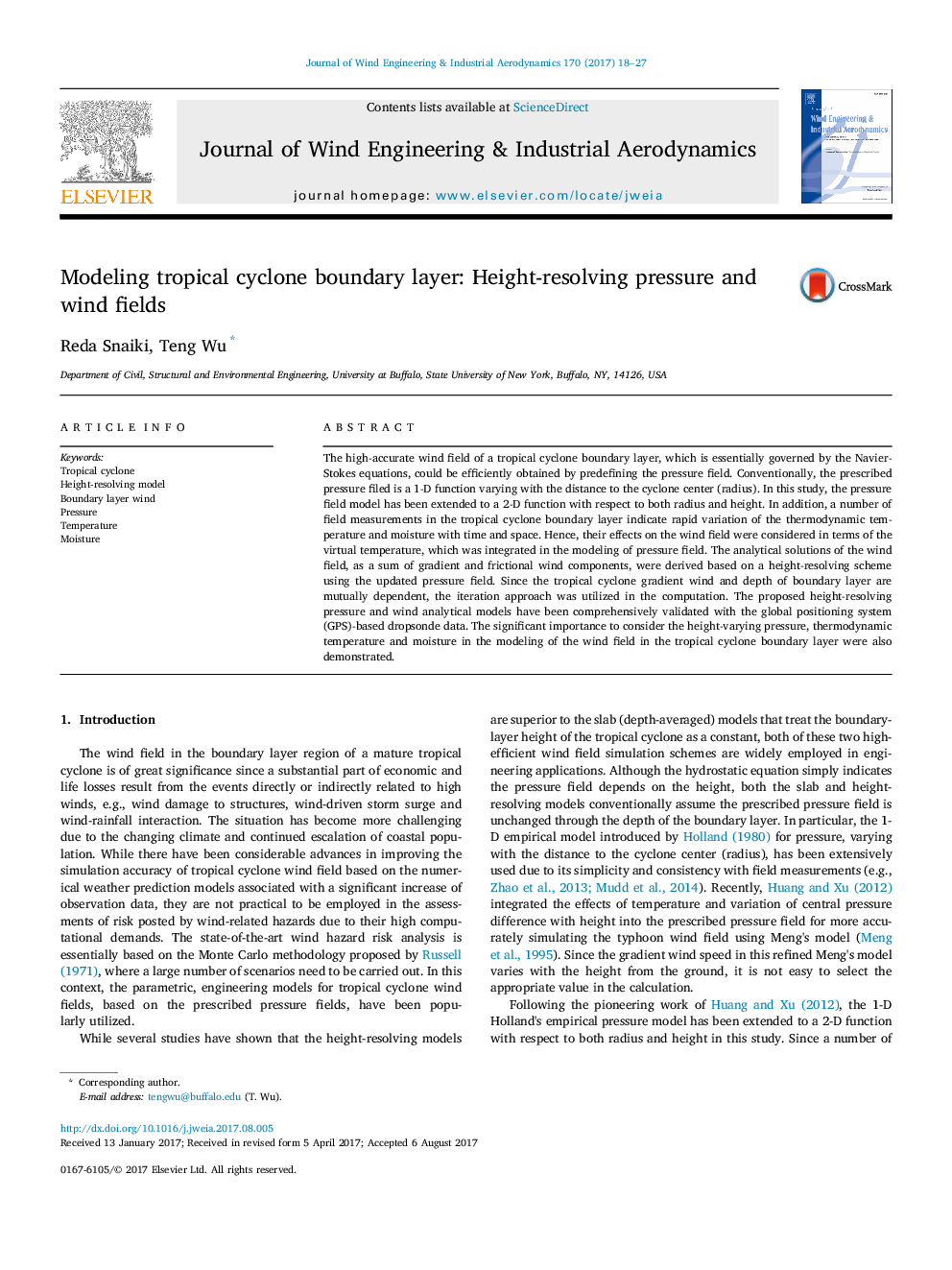| Article ID | Journal | Published Year | Pages | File Type |
|---|---|---|---|---|
| 4924745 | Journal of Wind Engineering and Industrial Aerodynamics | 2017 | 10 Pages |
Abstract
The high-accurate wind field of a tropical cyclone boundary layer, which is essentially governed by the Navier-Stokes equations, could be efficiently obtained by predefining the pressure field. Conventionally, the prescribed pressure filed is a 1-D function varying with the distance to the cyclone center (radius). In this study, the pressure field model has been extended to a 2-D function with respect to both radius and height. In addition, a number of field measurements in the tropical cyclone boundary layer indicate rapid variation of the thermodynamic temperature and moisture with time and space. Hence, their effects on the wind field were considered in terms of the virtual temperature, which was integrated in the modeling of pressure field. The analytical solutions of the wind field, as a sum of gradient and frictional wind components, were derived based on a height-resolving scheme using the updated pressure field. Since the tropical cyclone gradient wind and depth of boundary layer are mutually dependent, the iteration approach was utilized in the computation. The proposed height-resolving pressure and wind analytical models have been comprehensively validated with the global positioning system (GPS)-based dropsonde data. The significant importance to consider the height-varying pressure, thermodynamic temperature and moisture in the modeling of the wind field in the tropical cyclone boundary layer were also demonstrated.
Related Topics
Physical Sciences and Engineering
Energy
Renewable Energy, Sustainability and the Environment
Authors
Reda Snaiki, Teng Wu,
